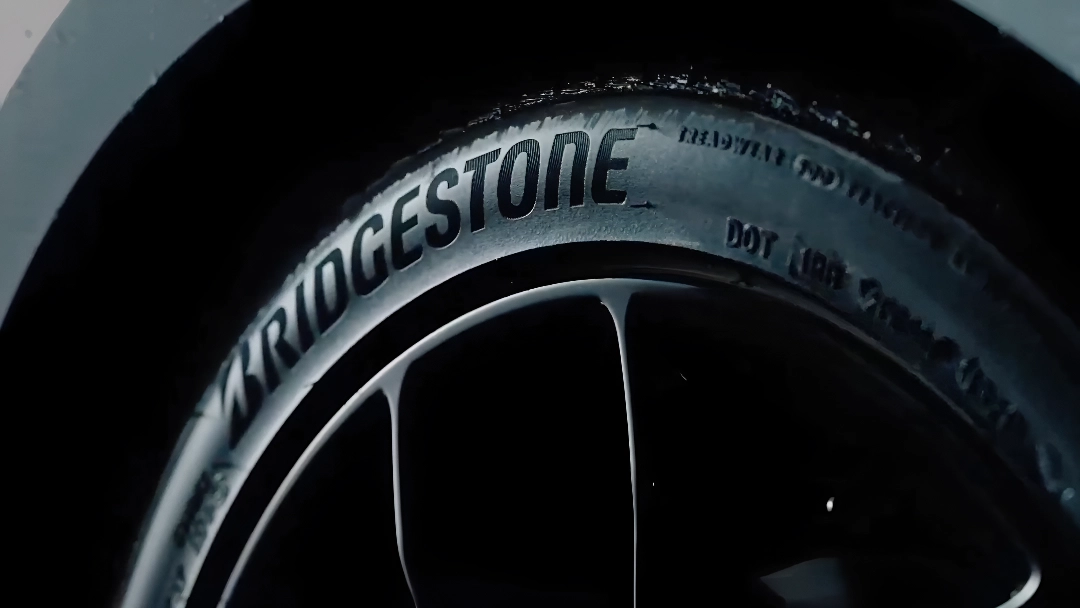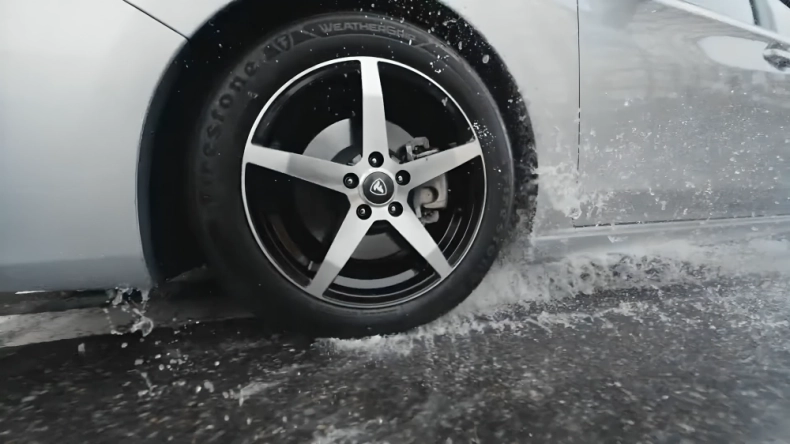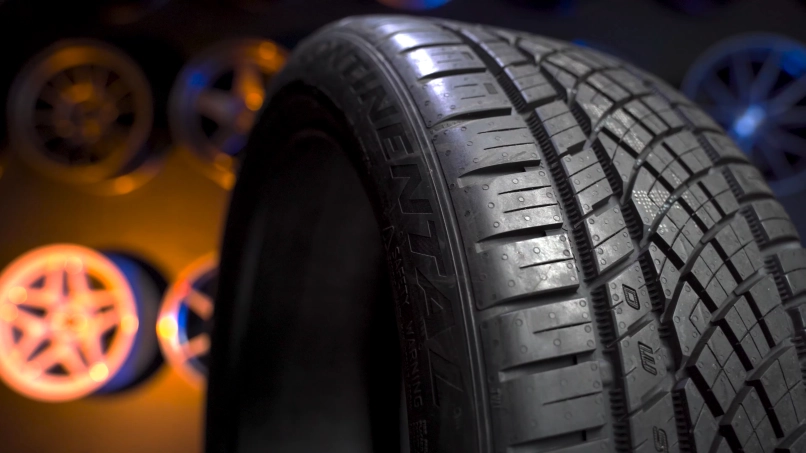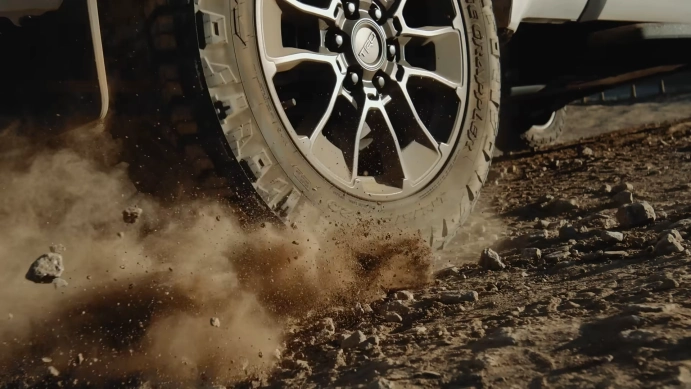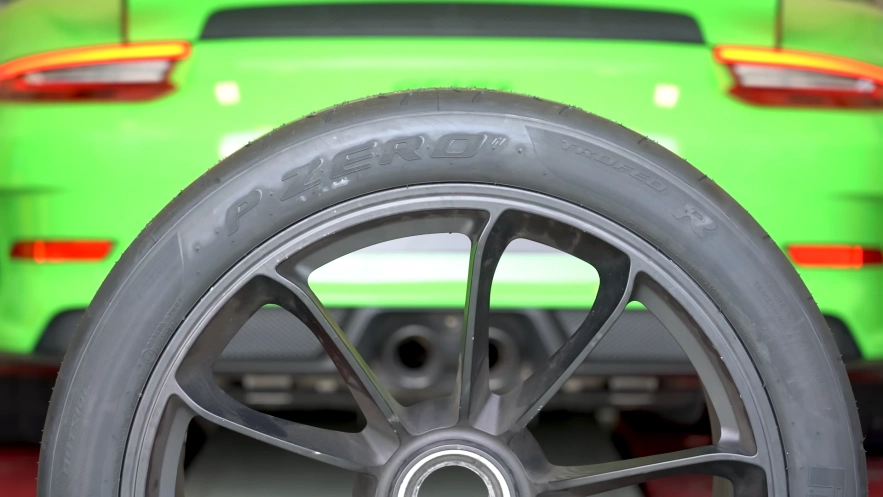The main cause of uneven wear, handling, and braking issues is improperly inflated nitrogen tires. Therefore, monitoring the nitrogen tire pressure is essential to maximizing tire performance and tread life. Before checking tire pressure, you need to know the exact technique to find out the current pressure. All you need to do is:
- Find the Recommended PSI
- Find a Gauge
- Unscrew the Inflation Valve Cap
- Check the Pressure With The Gauge
- Compare the Reading On The Gauge
- Inflate Your Tires To The Recommended PSI
- Retighten the valve cap
- Repeat this Process Every Few Months
This article will cover both the straightforward method for checking nitrogen tire pressure and the special characteristics and limitations of nitrogen-filled tires. Plus, don’t forget to join in the popular debate of air-filled vs nitrogen-filled tires at the end of the discussion.
Things to Consider Before Checking?
Before checking tire pressure, there are a few things you need to consider. Otherwise, you can’t expect accurate PSI reading after checking nitrogen tires.
The tires should be cold
The first thing you need to do is ensure that your tire is cold before checking the pressure. Since driving creates friction, heat accumulates, which has an impact on pressure.
According to Consumer reports, you should check tire pressure three hours after driving, to let it cool down.
Don’t forget about the temperature
The best time to check tire pressure for accurate readings is also first thing in the morning. Because the corresponding temperature can affect the tire pressure easily.
Park the car on the level surface
Make sure the car is stationed on a level surface. Otherwise, you may have difficulties checking accurate pressure.
How to Check Nitrogen Tire Pressure Accurately?
There is a simple step-by-step guideline you can follow to check nitrogen tire pressure precisely.
1. Find the Recommended PSI:
This is the first thing that you need to do. You can check the recommended PSI on a sticker inside the driver’s doors, or it can be found in the owner’s manual, and it should display the ideal pressure for your tires.
The most typical recommendation for most passenger cars will be between 30 to 35 PSI.
Warning: Occasionally, the pressure will be indicated on the tire’s sidewall. However, the sidewall displays the highest permissible amount of pressure your tire can hold, while still being able to operate safely. Meaning, it is not the recommended tire PSI, and it should never be applied.
2. Find a Gauge:
It’s important to have a pressure gauge to measure tire pressure in PSI. If you do not already have one, you can purchase one from any nearby big-box or online retailers that sell auto parts.
There are several types of gauges available. But we think digital gauges are best for giving the most accurate results within 2-3 seconds.
3. Unscrew the Inflation Valve Cap
Remove the inflation valve cap to check the present tire pressure. Make sure not to lose the cap. As they protect the valve.
4. Check the Pressure With The Gauge:
Here’s the process to check the pressure with three different gauges:
Digital gauge: If you have a digital gauge, center the gauge over the valve stem. Then, push it in one motion and release it quickly.
Stick Gauge (Manual): In the case of a stick gauge, insert the end of the gauge to take the measurement. Wait for a perfectly fitting gauge on the valve stem and depress it.
Here, you can hear the sound of escaping air from the valve. Push the gauge until it stops, because it will ensure the perfect fit.
Dial gauge: Insert the gauge into the valve stem. Now, press it firmly and release it.
Now, read the tire pressure in PSI, displayed on the gauge screen. Note it down.
5. Compare the Reading On The Gauge:
Next, compare the measured pressure with recommended pressure. If it’s low, then jump to the next step.
6. Inflate Your Tires To The Recommended PSI
In this stage, you need an air compressor to properly inflate your car’s tire. Place it on the valve stem and fill it up with air. Do a little bit at a time and check the pressure with a gauge to see if it matches the recommended PSI. Repeat it until the pressure gets into the related range.
If you put too much pressure on the tire, then place the little nub over the valve stem to release some air. Need help to find the nub? You can notice the nub at the back of the gauge. Finally, check the pressure.
7. Retighten the valve cap
Remember to retighten the valve cap once you have reached the recommended PSI. Now, repeat this entire process for each car’s tires.
8. Repeat this Process Every Few Months:
Already, you’ve learned how to check nitrogen tire pressure. Nevertheless, if it has been a few months, make sure to check the tire pressure to see if it has been inflated properly. How Can You Tell If A Tire Is Inflated With Nitrogen?
You can’t simply distinguish between air-inflated and nitrogen-inflated tires. Here are a few signs that can tell you that you have nitrogen-inflated tires:
- Color of Valve Cap: Usually, a green color valve cap will indicate that it is a nitrogen-filled tire. In contrast, the valve cap on an air-filled tire is either black or chrome.
- N2 Emblem: You can notice the N2 emblem on the tire, which is a nitrogen-inflated tire for sure.
- By Portable Nitrogen Analyzer: The percentage of nitrogen will tell you which tire you have. Therefore, use a Portable Nitrogen Analyzer. First, connect it and then check the reading. If the analyzer reads 95% or higher, then it is nitrogen-inflated tires. Again, if it reads 80% or less, your tire is air-inflated. And, 80-95% reading will indicate, the tire has a mixture of air and nitrogen.
How Long Does Nitrogen Last In Car Tires?
Nitrogen can last up to 2-3 months in car tires. You don’t need to be overhyped to go often to an air station.
The reason is very simple. Compared to air-filled tires, nitrogen-filled tires can maintain higher pressures for longer because nitrogen molecules are particularly larger than air molecules. As a result, the tires last longer because they can not leak out of the tiny pores in the rubber tires.
The National Highway Traffic Safety Administration (NHTSA) study also found that regular air escapes tires at a higher rate than pure nitrogen does.
Additionally, tires with nitrogen handle conditions with higher temperatures that lower the PSI. Again, it has less tear and wear during driving, which also makes it stable for minimal pressure loss.
According to Consumer Reports research, the air-filled tire’s average loss is 3.5 PSI at room temperature. The average pressure loss in tires with nitrogen filling is 2.2 PSI.
You can use nitrogen-filled tires instead of air-filled tires while still anticipating a monthly loss of 1 to 2 psi from air-inflated tires.
How Often To Check Nitrogen-Filled Tires
Nitrogen-filled tires should be checked at least once every 3 months, as nitrogen leaks much slower than compressed air. That’s why it is very obvious to check pressure ⅓ or ¼ as often as you would check for air-filled tires.
But, it is safe to check tire pressure once a month. Some people simply stop regularly checking the pressure, even though they are aware that nitrogen can prolong the life of tires. After a few months, they need to spend bucks on underinflated tires that cause noisy sounds or defective braking systems.
The car that is equipped with the automatic Tire Pressure Monitoring System (TPMS) has a triggering warning light. It displays insufficient tire pressure on the dashboard. So, it is very easy to detect without even checking the tire pressure.
Well, it is advisable to check the tire pressure before a long drive.
Can You Put Air In Nitrogen-Filled Tires?
You can put air into nitrogen-filled tires. It is safe to use compressed air in underinflated nitrogen tires.
Let’s make it more clear with the detailed information discussed below:
Mixing Nitrogen and Air
As we know, it is hard to find gas stations everywhere. So, You may think that driving on an underinflated tire is safer than filling it up with air. Underinflated tires are much riskier, as they cause uneven tire wear and difficulties in handling and steering.
Although the tire was previously filled with nitrogen, adding compressed air can’t cause any serious harm to tires. However, you don’t have to be afraid of any adverse chemical reaction between air and left-out nitrogen.
What Happens When You Mix
However, adding air to tires with nitrogen poses no risk. But, here, you may notice some differences in mixing air and nitrogen performance. These are-
- Pressure loss: Your tire will deflate more quickly if you combine nitrogen and air. You need to refill the tire frequently.
- Dilution of nitrogen: After filling compressed air, it will just dilute the purity and concentration of the nitrogen. Nitrogen is made up of 78% air. As a result, it will be slightly diluted to 21% oxygen and 1% other gases. As a result, your tire doesn’t get the same extra advantages as previously with the air mixing.
- Create corrosion: Whenever you mix the air in nitrogen-filled tires, it’ll increase leakage from the rubber tires. As a result, moisture in ambient air can lead to corrosion of tire components like valve stems and wheel rims. As a result, you may lose tire performance and require repair.
- Reduce pressure stability: Definitely, you can’t expect pressure stability at a different temperature when you are adding air to the tires. Using air in nitrogen tires, the pressure will increase. In a high temperature, the pressure can rise faster. Therefore, a thermal expansion could occur and harm the tire as well.
- Shorten the tread’s life: By adding air to the nitrogen tires, there’ll be uneven tire wear, unstable pressure, and other braking system difficulties that may happen that decrease the lifespan of a tire.
Nitrogen Vs Air In Tires
There are two options for filling tires: Air and Nitrogen. Nowadays, people prefer nitrogen-filled tires over compressed air tires. Let’s talk about the benefits and limitations of nitrogen-filled tires according to deep research and user experience.
Reasons for Using Nitrogen in Tires
- Fuel economy: You don’t need to refill nitrogen frequently in tires as air-filled tires. So, you don’t have to worry about underinflated tires within a few weeks or a month.
- Stable pressure: Nitrogen-filled tires maintain stable pressure at different temperatures.
- Safety: There’s less possibility of corrosion, blowouts, and other handling difficulties. So, it is a safer choice over air-filled tires.
- Increased tread life: Tires with nitrogen filling have more even wear, a smoother ride, and better gas mileage, all of which contribute to increased tread life.
Benefits and Drawbacks
Although you may get some advantages with nitrogen-filled tires, there are a few limitations too. Such as:
- Cost: Filling tires with nitrogen is much more expensive than compressed air. Again, it requires extensive tools for maintenance.
- Availability: It is hard to find a nitrogen filling station in some areas. Therefore, you can not rely on changing or adding air to the tires.
- Limited benefits: Using nitrogen-filled tires in regular passenger cars can’t give you more potential benefits than air-filled tires. The benefits are modest but negotiable given that you must pay for regular driving.
FAQ’s
Is PSI different for nitrogen tires?
No, PSI is the same for both air and nitrogen tires. The sticker inside the car’s door indicates the recommended PSI. The nitrogen tires must be inflated to the recommended PSI.
Can I mix air and nitrogen in the tire?
Yes, you can mix air on top of the nitrogen in the tire. Nitrogen tires that are underinflated are safe to add air to. There’s no possibility of adverse chemical reactions. But, your tire performance can be less effective after mixing air with nitrogen tires.
Do nitrogen-filled tires lose pressure?
Nitrogen-filled tires lose less pressure compared to air-filled tires. As nitrogen molecules are larger than compressed air. So, it leaks 3 times slower than the air from the rubber tire pressure.
Does nitrogen tire pressure fluctuate?
No, nitrogen tires maintain stable pressure at different temperatures. Even at high temperatures and speeds, the pressure remains constant.
Is nitrogen good for long driving?
Yes, nitrogen tires have better gas mileage. It is really good for a long trip with a smooth riding experience. Less pressure loss, handling issues, and uneven wear are possible with nitrogen tires.
Conclusion
Do not expect too much from nitrogen-filled tires if you do not have properly inflated tires. Better gas mileage, slick performance, and longer tread life are only guaranteed by regularly maintained and correctly inflated nitrogen tires.
This guide’s additional tips should help you understand how to check tire pressure more clearly. Ensuring the right pressure is more important to prevent unwanted situations. For this reason, you can visit the mechanic shop or consult a qualified tire expert. You can accurately check tire pressure with their assistance.
Last tip: If you have a regular passenger car, then filling it with compressed air is much better than nitrogen. It will cut costs, allow for simple refueling, and ensure your regular driving is safe.



